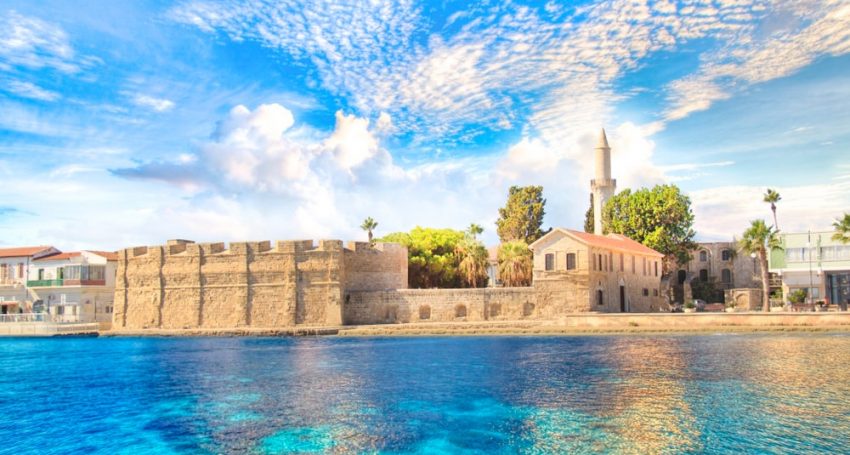The Castle of Larnaca is located in the southern part of the coastal avenue known as “Phoenix”, which is translated from the Greek Cypriot dialect as “palm trees”.
Originally the castle was built to protect the southern coast of Cyprus and the port city of Larnaca from the raids of enemies: pirates, Arabs, Turks and others. Later it was used as an artillery post, garrison, prison and museum.
Abbot Giovanni Marity, who lived in Larnaca in the first half of the 18th century, wrote in his chronicles that the Larnaca Castle was built by the Turks and at the time, which the abbot writes about, the castle was already in dilapidated condition, although it was still guarded by a garrison.
The abbot suggested that the castle was built by the Ottomans because of its Turkish style and inscriptions.
History of the Castle
It is not known when the Byzantine fort was first built, but archaeological research carried out in this area, the castle, suggests that the first buildings appeared here in the late XII century AD.
According to surviving written sources of ancient historians, such as Florius Boustronius and Jauna, the castle dates back to an earlier period and was built during the reign of English King James I (1382-1398). These sources say that the castle was erected to protect the port of Larnaca, which was used as the main port of the island after the fall of Famagusta.
Stories from medieval travelers confirm that the castle existed and operated until 1625.
The city acquired particular geopolitical importance in the Middle Ages, after the Genoese occupied the country’s main port, Famagusta, and a new port city was needed.
Shortly after Larnaca became one of the main ports of the island, there was a need for a defensive structure protecting the city and the harbor.
Between 1382-98, during the reign of Jacob I, a small Byzantine fortification located near the harbor was rebuilt into a more powerful and multifunctional building.
By the XVIII century, the castle began to lose its defensive value and was abandoned.
When Cyprus was a British colony, the castle was used as a prison. There was installed a gallows for execution of prisoners. The last execution took place in 1948.
During the Turkish invasion in 1974, the castle was owned by Greek Cypriots. And it became a prison again.
Our time
After Cyprus gained independence in 1960, the castle was turned into a museum, and the castle courtyard was converted into an open-air theater with a capacity of 200 people. Exhibits from the early Christian, Byzantine and Post-Byzantine Cypriot times can be found in the western hall of the museum. Byzantine frescoes are located in the central hall, medieval ceramics, utensils and weapons occupy the eastern hall. There are samples of medieval glazed ceramics (sgraffito dishes) of the XII – XVIII centuries, metal kitchen utensils and weapons of the XVIII – XIX centuries, as well as helmets and swords belonging to the XV – XVI centuries.
The surviving interior of the castle consists of a complex of buildings, built in different periods of time. The two-storey building on the north side was built in the Ottoman period, as evidenced by its architectural style and the Turkish inscription above the entrance, while the east and south wings belong to earlier eras.
Location
Phone +357 24 304 576
Ticket price €2.50
Website
Museum working hours:
September 16 – April 15 from Monday to Friday from 8:00 to 17:00.
April 16 – September 15 from Monday to Friday 8:00 to 19:30
Saturday and Sunday: 9:30-17:00 a.m.


